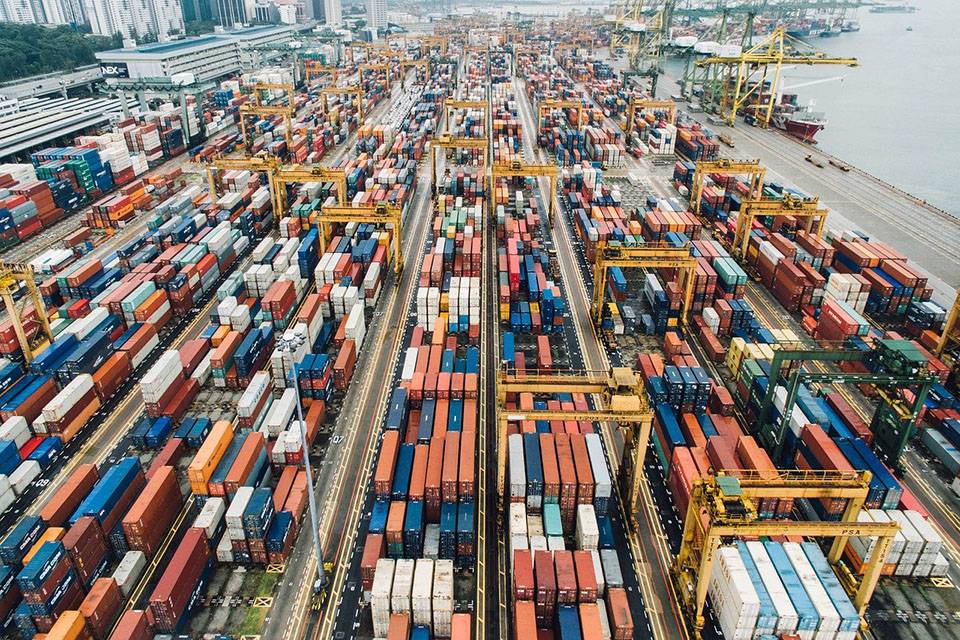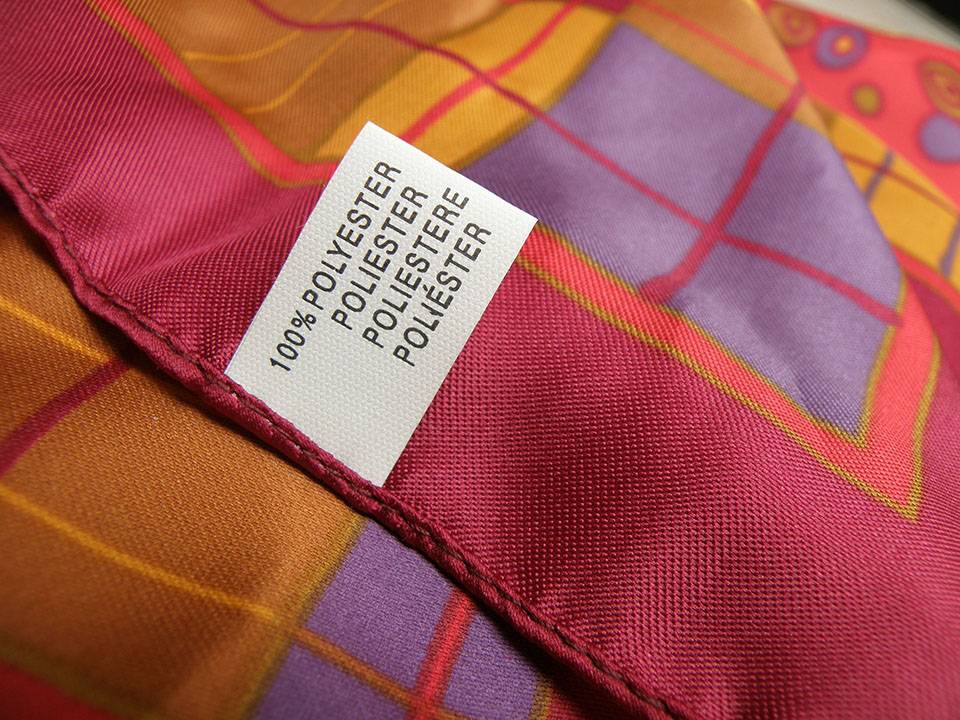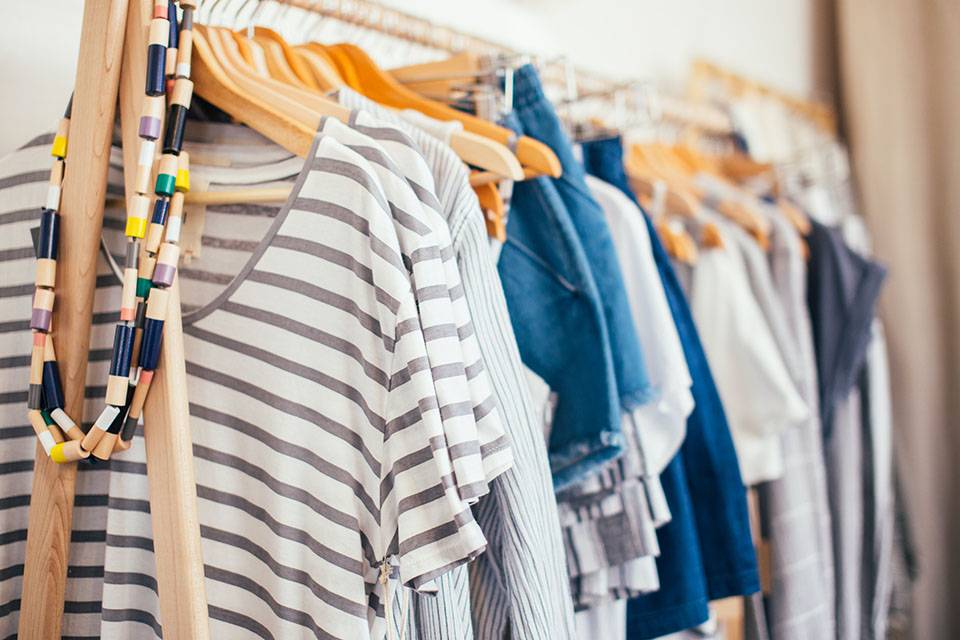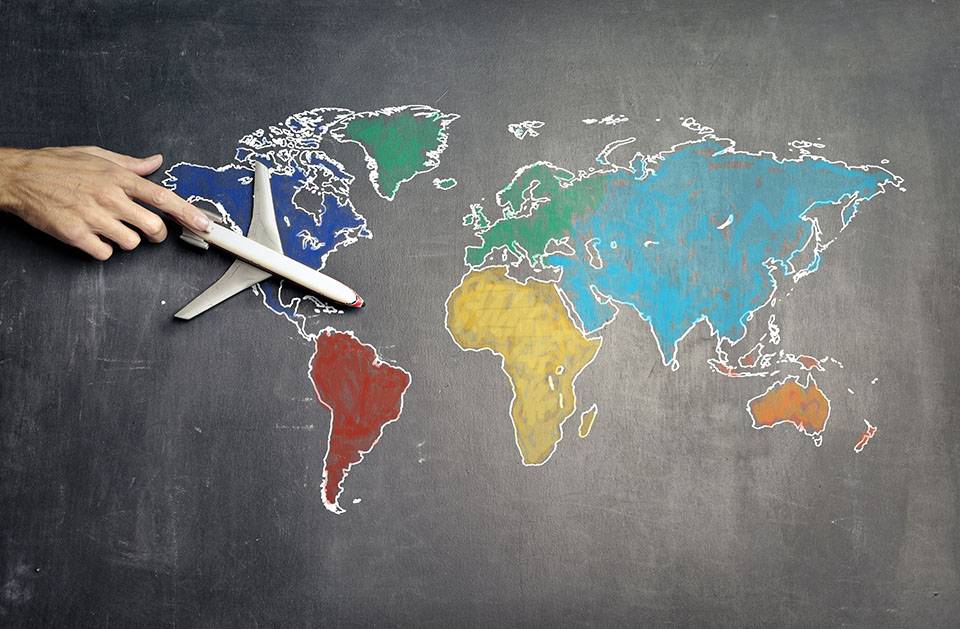One afternoon over a delicious plate of sweets, my friend, the owner of a large Buying House in Delhi, mentioned to me how difficult it has become to extract business from customers. They say “we have no India product” hence cannot give any business.
"India product" are the two words that all Buying / Sourcing companies hear quite often. These two words are enough to demoralize anyone in the international apparel trade. These words, perhaps, are the words that make one feel so ashamed in one's own eyes.
Does “India Product” mean that India cannot produce and deliver on time or the product cannot be made in India.
To understand this attitude of the customer, let us go a little into the past.
As we all know, the textile and apparel industry is one of the earliest industries to have developed in India. Its inherent and unique strength is its incomparable employment potential owing to the presence of the entire value chain from fiber to apparel manufacturing within the country, which is our asset.
The elimination of quotas post 2005 changed the global clothing industry forever. The facilities that were needed before January 2005 are no longer sufficient to get the orders. The ability to ship a quality garment On Time Every Time and at a competitive price is no longer an asset but, on the contrary, has become an entry-level requirement.
If the answer to the customer is only, “I can ship a quality garment on time every time and at a competitive price”, will take you out of business because thousands of other factories are prepared to provide the same facilities, or they will find themselves queuing up to face the client who will ask: “What can you do for me?” or “We have no India product.”
It is particularly important that the Buying House or the factory must be able to reply, “Besides the product you need, I can provide the services you want.” But can it be provided with the current state of the industry?

The 1974 Multi Fibre Agreement, and its consequent quota system, was the key factor shaping today's global garment industry, including India.
Developed countries used it to restrict exports from traditional suppliers - the efficient garment producers of Hong Kong (China), the Republic of Korea, Taiwan, and later, China. Customers developed relations with new garment-exporting countries such as Bangladesh, India, Pakistan, and Sri Lanka in South Asia.
Other developing and underdeveloped countries also attracted business by exploiting trade preferences such as bilateral free trade agreements and the Generalized System of Preferences. These exempted certain imports from these countries from duty.
The result was a shift in market share from more efficient to less efficient producers.
Since these new garment-exporting industries could offer little more than cheap labor, garment sourcing degenerated into "nomadic sourcing" - the search for quota-free countries with the cheapest workforce, which spurred what is now termed the "race to the bottom".
But to maximize profit - and to keep their customers - the new garment suppliers in South Asia were forced into a constant struggle to lower prices by reducing costs and margins.
The quota system, while pulled a certain business to a country, restrictions caused other market distortions, such as:
New producers and a large supply of products under quota protection. The new garment-exporting countries concentrated their production on the categories most restricted by quota (cotton T-shirts, jeans, and other cotton trousers, and underwear). These were not only the largest import categories, but they were also the easiest to produce.
Concentration on low-skill, low-value products. The new garment-exporting countries also took the course of least resistance and, with very few exceptions, continued to concentrate on these easier categories. They never traded upward, nor did they develop skills necessary to compete on any level other than cheap labor.
Efficient producers moved up the value chain. We saw China's garment exporters, effectively barred from these products, expanded their production to other products that, for the most part, require greater skills and facilities.

In January 2005, the global garment industry was freed from quota restrictions. For the first time, customers were free to buy wherever they wanted and from whomever they wanted. Meanwhile, the enormous overhang of garment-making capacity, previously locked away by the quota system, became available.
With capacity twice the size of demand, the global garment industry entered the greatest buyers' market in its history. Now to compete, factories and entire national garment export industries have to satisfy customers' ever-increasing demands.
It became important that the factories and sourcing determined what those demands are and take the necessary steps to meet them.
Customers also started demanding more assistance in the pre-production process.
To compete, sourcing/factories must offer better services. To put it another way, the post-2005 global garment industry has become a service industry.
Many services require greater resources than are available.
In the last decade, apparel companies/sourcing knew that commercial success was dependent on maintaining quality and achieving the best freight on board (FOB) price and shortest lead time for their products. Today, human rights issues and environmental requirements are crucial factors in the selection of business partners, and addressing consumer concerns has become an important strategy. The aim is to gain an advantage in terms of customer service and cost over competitors.
Sourcing strategies must reflect the performance capabilities of the supply base. In most cases, there are a variety of possible vendors that differ in cost, lead times, and flexibility of production. Vendors with the lowest cost generally offer virtually no flexibility in booking capacity and shipment times of several weeks. They often require the total production to be allocated relatively evenly throughout the year. More responsive vendors may have shorter lead times and allow greater flexibility vis-a-vis production commitments. Additionally, different vendors may be willing to store limited amounts of the finished product before delivery for a fee.
Sourcing should tend to leverage a portfolio of two types of vendors: Type 1 vendors are characterized by long lead times, lower unit costs, and less flexibility whereas Type 2 vendors offer short lead times, high unit costs, and more flexibility.
This should enable such strategies as exploiting lower-cost production for the most predictable segment of demand while sourcing the more speculative segment via the more flexible, but more costly, vendors. Numerous Indian buying agents claim to offer the best services to suit the customer's business but fail to offer the same.
This brings us to the question of whether the Buying Agents / Sourcing houses are incapable of scaling up the apparel business or are faced with some genuine constraints and challenges.
As we know apparel sourcing and manufacturing is one of the most in-demand businesses today. To remain competitive, one must seek to expand their business in various ways. Furthermore, factors such as volatile fashions, short product life cycles, unpredictable market trends, and impulse buying behavior of customers are to be given the highest importance by manufacturers/sourcing to sustain themselves in the apparel industry segment.
The apparel world is complex and seasonal. There are product types that require special fabrics and trims that are still not produced in India. Indian apparel manufacturers have a choice of either importing those raw materials from other countries like China or not participating in those opportunities.
The growth story of the apparel industry in India is confronted by challenges such as Changing consumer behavior, proposed withdrawal of GSP norms by the US which could adversely affect some of the smaller players, comparatively higher trade barriers, locational disadvantages, and comparatively lower infrastructure ranking.
The biggest reason behind India’s near absence from the main product category that accounts for about 70% of world trade in apparel is synthetic apparel.

Today, most formal, sports, and fashion wear use synthetic fabrics. They are durable, do not fade, can have any color, easy to wash, and can easily blend with wool, cotton, and other fibers which allows experimentation. Unsurprisingly, synthetics have overtaken cotton and become a favorite of the fashion industry.
With weak synthetics, India’s apparel industry is a horse running with one leg tied. The results are low exports, low wages, and low investments in the sector leading to a serious handicap for the Sourcing houses.
Globally cotton dominates the spring and summer seasons. Synthetics and blends dominate the autumn and winter seasons. Indian units run six months a year to produce cotton apparel. In the remaining six months, most units are shut or run at a low capacity as they do not have orders for synthetics/ winter wear. Most workers go home.
The absence of synthetics also affects workers’ wages. Winter wear is more expensive than casual cotton wear. So, at 20% labor cost, a worker making a suit would earn more money than the worker making a blouse. Since India is mainly a casual cotton wear exporting country, wages remain at minimal levels.
Further to this other problems too plague the industry which seriously erodes the confidence of international customers.
The Indian textile players mostly import refurbished looms (air-jet, rapier, projectile, water jet) from abroad due to lower costs. The production efficiency of these looms is much lower than the new ones. It also has high maintenance and operation costs. This hampers the productivity of the apparel manufacturers in India.
The readymade garment (RMG) industry scores low on the parameter of key inputs. At around 50% of the revenue, raw material constitutes the largest share of the overall operating costs of apparel manufacturers. Most of the manufacturers in the industry are non-integrated with the production of fiber intermediates. The key raw material used by the garment manufacturers is cloth made from either cotton or manmade fiber. As the availability of cotton in India is ample, India’s garment exports are skewed towards cotton.
The cotton prices are regulated to a certain extent (i.e. with specific reference to Government driven Minimum Sale Price (MSP) and also move in tandem with the international prices. Employee cost also forms a substantial part of the overall cost structure as the apparel industry is labor-intensive.

Employee costs have witnessed a steady increase from 9% in FY10 to almost 14% in FY19. Due to a high degree of dependence on labor, the industry is plagued by unionization issues.
Power & Fuel Cost, Depreciation, and Interest costs have remained fairly stable for the above period. On account of the low investment requirement and absence of stringent licenses for setting up a garment unit, many small players have flocked into the industry making it highly fragmented and competitive thereby constraining profitability margins and leading to intense competition.
The gross working capital cycle has increased marginally from 125 days to 145 days with the numbers coming in at the highest in FY19. The payables days also increased; hence effect in the net working capital increased to 93 days approx.
The industrial ecosystem is still largely dependent on China for certain coated fabrics, special trims, etc. While the technology is available, the challenge is capacity and quality. Industrial capacity creation needs investment appetite and a gestation period.
Most of the customers are now Fast Fashion Brands. These buyers compare Standard Allowed Minute (SAM) across manufacturers and countries while placing orders. Skilled labor and the latest technology are a must to ensure a good SAM. 80% of Indian exporters do not meet SAM or other requirements thus lower productivity and more value loss.
Higher trade barriers are another factor. Indian textile companies face higher trade barriers compared to other competing countries like Bangladesh, Vietnam, and Pakistan in key markets such as the USA and EU. Average tariff on textile products faced by India vis-à-vis competing countries in EU and USA looks as follows: average tariff rates: EU US India 5.9% 6.2% Bangladesh 0.0% 3.9% Vietnam 6.1% 5.5% Pakistan 0.0% 5.3%
Poor infrastructure facilities is another cause. India suffers from a geographical disadvantage as it is located far away from major global fiber-consuming markets like America and Europe compared to its global counterparts - Turkey and China. As a result, India has to bear higher shipment costs with longer lead times thereby impacting exports.

India also lags behind its global counterparts in terms of transportation infrastructure facilities, leading to high transaction costs and longer lead time.
For instance, shipping a container of garments from India to the US is costlier and longer as compared with China. Wider geographical spread coupled with the high inland transportation cost has also affected the growth of export-oriented textile and related industries in India.
India needs to diversify its fiber base. Indian textile industry is predominantly a cotton-based industry. Approximately, 74 percent of the apparel exported from India is made up of cotton. However, global apparel consumption is well diversified across fibers. Therefore, to remain competitive in the global apparel industry, India needs to increase the share of MMF-based apparel in its overall apparel export portfolio.
These challenges require concerted government intervention at various levels to be appropriately resolved.
On the other hand, we see Chinese investments in white goods in India. As for textiles they still play China's plus one strategy by keeping the capital and knowledge-intensive parts of the textiles value chain in China and moving apparel manufacturing to neighboring countries, which have a labor cost advantage. This way lead time considerations can be addressed, while capital investments are optimized.
Further, China has invested in countries, which have large apparel manufacturing bases like Bangladesh and Vietnam, which enjoy duty-free access to large Western markets. India does not offer such an opportunity for now.
To sum up, India has a rich textile heritage with thousands of firms and skilled craftsmen. Joint efforts from the industry and government would make us a significant player in the apparel trade. The industry engages about 50 million people. The change will benefit everyone associated.
RELATED TOPICS:#Apparel,Sanjay Lal
Leave a comment
Our email address will not be published. Required fields are marked *







9 Comments
Manju Nathan Feb 01, 2024 at 18:46 pm
Thanks for sharing such informative information, great blog post.
Textile UnlimitedAug 17, 2023 at 12:07 pm
This type of bed sheet lay a propos the upper side of the mattress and is folded into the corners of the bed. Mostly, these sheets are used by everyone as textile inspection house in pakistan necessity. This type of sheet consists of elastic concerning all sides of the fabric. They get sticking to of fit on summit of the corners of a mattress and folded underneath it. There are instructions written as regards its label to make known which side is the bottom halt.
TommyNesbittFeb 06, 2023 at 17:55 pm
Therefore, Chinese influence leaders have shown pleasing glamor in investing in Pakistan's visit site As you know, the textile industry is a large sector in Pakistan and there are colossal investment opportunities in this sector.
1860Jan 30, 2023 at 20:43 pm
1860
1451Jan 24, 2023 at 10:14 am
1451
Textile Buying HouseJan 16, 2023 at 15:17 pm
Different companies serve as textile source and buying house in the textile industry. But the best one is Textiles Unlimited, Inc. which is serving the best sourcing and inspection services to clients.
KayasuaseDec 08, 2022 at 12:45 pm
Koide et al Antitumor effect of hydrolyzed anthocyanin from grape rinds and red rice safe cialis online
Best place to buy cialis onlineOct 12, 2022 at 14:52 pm
I'm impressed, I have to admit. Seldom do I encounter a blog that's both educative and entertaining, and let me tell you, you have hit the nail on the head. The issue is something that too few men and women are speaking intelligently about. I am very happy that I found this during my search for something relating to this.
Prashanth HVMay 15, 2021 at 10:41 am
Great article Sanjay. Very good insights on the Indian garment exports market.